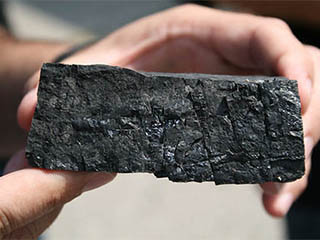
photo: <a href="http://www.flickr.com/photos/columbuscameraop/3764691253/">Ryan</a> via flickr.
Editor’s Note: A weekly roundup from our friends over at TreeHugger. Enjoy!
Appalachian Coal Set for Big Decline, Protests & High Profile Debates or Not
Regardless of the outcome of high profile public debate—viz Waterkeeper Bobby Kennedy Jr v. Dirty Coal Don Blankenship smackdown tomorrow night at the University of Charleston—or vehement protest from the likes of youth activists to seasoned scientists, Appalachian coal is set for big declines in the coming decades due to market and legislative forces. That’s the word from Downstream Strategies’ latest report. The solution? Diversify now.
Nuclear Winter: Now Easier to Trigger Than Ever (In Short: We’d Be F#%^ed)
Nuclear weapons are the gift that keeps on giving. We knew they were horrible from the very start, but over the following decades we kept discovering new reasons why they are bad: In the early 1980s, more and more studies showed that a nuclear winter was probable, and this probably helped cool down the cold war. More recently, a study showed that even a small regional nuclear war could create the mother of all ozone holes. But now we learn that even a small regional nuclear war could create our worst nightmare, a nuclear winter lasting about 10 years (!).
Let the Electric Bill Outrage Begin: As a Two-Month Cold Snap Overlaps Disappearing Utility Rate Cap
Electricity bills are rising steeply all over the USA. In some of the most coal-dependent states, increases are in the 7% to 100% range, and signs of consumer outrage are surfacing. This is before any Cap & Trade for climate protection. A major contributing factor is deregulation of the power industry, initiated by Congress in the free-market fervor of the mid-90’s, which called for post-dated phase out of electricity ‘rate caps’ a.k.a. removal of price controls.
How 40 Endangered Sea Eagles Bring in $3 Million a Year to a Small Scottish Island
Endangered sea eagles have been making a slow but distinct recovery in recent years. The awe-inspiring bird has been successfully breeding in the wild after 25 years of aid from conservationists. While this is certainly good news for the imperiled species, it’s also proved to be quite a boon to the Scottish island of Mull, which is home to nearly half of Scotland’s sea eagle population–thanks to interest in the eagles and the birds’ recovery, Mull is raking in over $3 million annually in a flourishing tourist industry. This is an encouraging figure, because it provides an ideal model of conservation and tourism coexisting happily, and one where there’s a distinct monetary benefit for successful conservation.
















